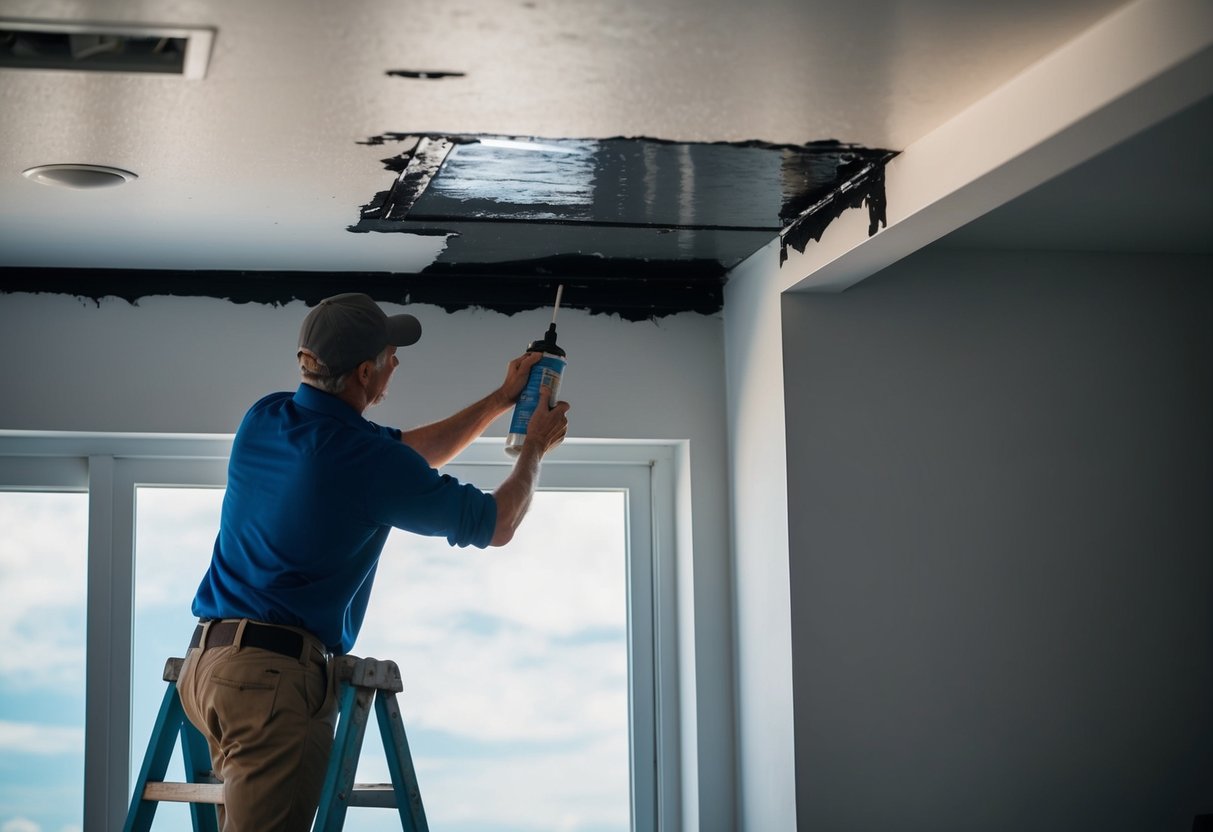DIY Roof Repair: Simple Steps to Prevent Major Leaks and Damage
Step Flashing Installation
Step flashing is vital for roofs where vertical walls meet sloped sections. Its design allows it to overlap with each piece of shingle, creating barriers against water intrusion. The installation begins at the roof base, working upwards. Each flashing piece should overlap the one below by approximately two inches. Proper alignment is critical to ensure effectiveness.
Nails or screws should secure the step flashing, ensuring they penetrate both the roof decking and the wall. Special attention must be given to the corners and edges, where leaks are more likely to occur. Sealant should be applied over the tops of the flashing to enhance waterproofing. Regular checks will help identify any movement or damage, allowing for timely repairs.
Dealing with Water Damage and Stains

Addressing water damage promptly is crucial to prevent further deterioration and complications like mold growth. Swift action can help fix interior water stains and prevent future issues efficiently.
Interior Water Stain Removal
Water stains often result from leaks that allow moisture to penetrate walls or ceilings. They are not just unsightly but can indicate underlying damage if left unaddressed. To remove these stains, it is first necessary to fix any leaks to prevent the recurrence of the problem. Start by applying a stain-blocking primer, as this helps seal the stain, preventing it from seeping through the new paint. After allowing the primer to dry, a coat of matching paint can be applied to restore the original appearance. Sometimes, more than one coat may be needed for complete coverage. Paint manufacturers often have products designed specifically for stain-blocking.
Preventing Mold Growth
Mold growth can be a significant consequence of water damage. It thrives in moist environments, which often occur due to lingering water leaks. Ensuring that any leaks are repaired is a primary step in preventing mold. Ventilation also plays a crucial role in controlling humidity levels, often achieved through the use of air conditioners or dehumidifiers. If mold is already present, it is important to clean the affected area with a solution of water and detergent, which helps remove surface mold. In cases where mold penetration is severe, professional remediation might be required to ensure safety and thoroughness to protect the structure and residents’ health.
Maintaining Roof Ventilation and Insulation
Roof ventilation and insulation play crucial roles in preventing leaks and maintaining a comfortable home environment. Proper care in these areas helps manage temperature extremes, reduces energy costs, and prolongs roof life.
Ensuring Proper Attic Ventilation
Proper attic ventilation helps regulate temperature and moisture levels, which can prevent mold growth and rot. Roof vents, such as ridge vents and soffit vents, facilitate airflow and should be unobstructed. It’s common for debris or insulation to block these vents over time, so regular checks are essential.
The use of both intake and exhaust vents, working in tandem, ensures a balanced airflow system. Each vent type has a specific role, and having an appropriate mix ensures efficiency. A professional consultation might be necessary to assess the exact ventilation needs of a roof.
Assessing and Improving Insulation
Insulation in the attic keeps indoor temperatures stable by reducing heat loss in winter and heat gain in summer. This, in turn, lowers energy bills and eases the burden on HVAC systems. Different insulation materials, like fiberglass batts or spray foam, offer various benefits, and some may be more effective depending on the area’s climate.
Routine assessments of attic insulation reveal worn or insufficient areas that require attention. Upgrading or supplementing existing insulation enhances performance. Homeowners can benefit from consulting insulation specialists to determine the most suitable options for their roofs, ensuring energy efficiency and overall comfort.



